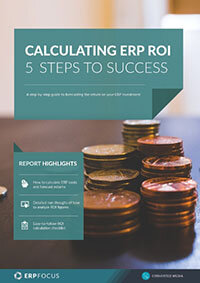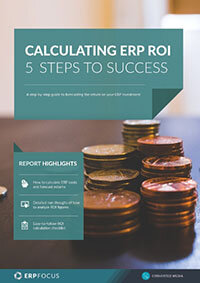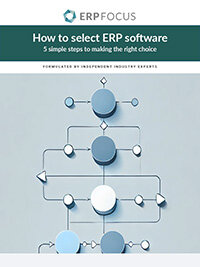How to conduct a thorough ERP audit
The Oxford Dictionary defines an audit as an official investigation of an organization’s accounts, typically by an independent body. An ERP audit is an investigation into aspects of an organization’s ERP systems, resulting in an opinion on their adequacy and controls. It expresses an opinion on whether the records and processes in the ERP system meet your business needs and compliance requirements.
As for how to audit an ERP...First, clarify your objective. ERP spans finance, operations, supply chain, and more. Define what “adequate” means for your scope. There is no one-size-fits-all answer.
Compliance audit
Check that documented procedures align with what users actually do in the ERP. Observe users, map their actions to the procedure manual, and flag discrepancies. Discrepancies may indicate training gaps or outdated documentation.
Compliance audits can also be external, such as a medical device business following GMP or good manufacturing practices. Another business with connections to Europe should follow GDPR requirements. Your business data is kept within your ERP. What data is subject to GDPR? Your audit might first identify all data within your ERP that is subject to GDPR. Your audit then evaluates whether the protection of that data is adequate.
Process audit
Auditing along a process could be your objective. Look at your purchase order processes, for example. Your business probably has levels of authority to authorize spending. A level one buyer might be authorized to make purchases up to $2,500, and your chief executive officer might have a limit of $250,000. Are these levels set within ERP to ensure that any purchase order has proper authorization?
Get your free ERP selection checklist so you don't miss a step when considering a new ERP system
In a business with inventory, many purchase orders with high value will be to purchase inventory items. Your audit might verify there is an actual customer order or an approved forecast serving as a demand before approval of an inventory purchase.
ERP risk audit
SOX, the Sarbanes–Oxley Act, requires businesses to assess various kinds of risk. ERP systems contain the transactions of all kinds that yield the business’s financial statements. While the SOX Act suggests a top-down approach to controls, our audit might look from the bottom up, beginning with individual transactions to assess risk. Are there appropriate controls over the transaction, and who is allowed to enter that transaction? Is the ERP configuration designed to lead a person toward the optimal choice as transactions are required?
System audit
We can look at an ERP audit from a systems perspective, too. Do we have the right hardware and network to best support our use of ERP? Are any users suffering slow processing because their computer is obsolete or improperly set up? Is our wireless network consistently available in the back corner of the warehouse? What is our actual downtime related to server or cloud access compared to our standards? Are those downtime standards appropriate for our business?
Security audit
Review user roles and permissions. Assign financial record access to accounting, engineering data to engineers, and view-only rights elsewhere. Balance mobile access needs against firewall and data-leak risks. into a thumb drive before leaving to take a new job.
Waste audit
Apply lean principles to ERP: eliminate overproduction (e.g., excessive minimum order quantities), waiting (slow logins), transport (manual “sneakernet” transactions), over-processing (unnecessary approvals), excess inventory (batch postings), motion (shop-floor terminals too far apart), and defects (erroneous transactions).
Validate ROI and benefits
When you selected your ERP, you projected returns: labor savings, error reductions, process improvements. Audit those assumptions by comparing planned versus actual metrics (e.g., did headcount drop as expected? Are you hitting a 7.5% ROI on implementation?).
Building your audit team
Who should staff your team? A good rule of thumb is to choose people outside the domain of the audit. Engineers should not audit bills of material, but financial people have an understanding of complex data relationships and could perform the audit. Auditors must be people who can think critically and spot flaws in logic. They must also be agile enough to understand when a user-developed workaround is an improvement over the expected process flow.
Management also must empower the auditors, giving them the allocated time, budget, and authority so they can interview users, review system settings, and report findings without obstruction.
Report findings and drive follow-up
An ERP audit only adds value if it leads to action. Classify findings by severity:
- Critical issues (security gaps, compliance violations) demand immediate fixes.
- Medium-priority issues (process inefficiencies) require scheduled remediation.
- Low-priority items (documentation updates) enter your continuous-improvement backlog.
Assign owners, set deadlines, and track progress in your project management tools. Be sure to schedule a follow-up audit as well. As conditions change and new risks arise, regular audits are essential to maintaining and enhancing the quality of your ERP ecosystem.
Free white paper

Calculating ERP ROI: 5 steps to success
Calculate your new ERP's financial benefits with this comprehensive guide

Featured white papers
Related articles
-

28 cost elements to include in your ERP TCO calculation
With differing definitions and more hidden costs than you can shake a stick at, ERP TCO can be a ...
-

CMMC Compliance: What Aerospace and Defense Manufacturers Need to Know
Key insights on CMMC compliance, deadlines, and securing DoD contracts with CMMC 2.0 certificatio...
-

Top ERP systems for small businesses
Which ERP solutions are best for small business needs? Information on features, scalability and m...




